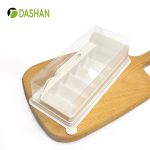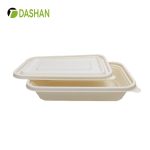Quick Summary
This article explores the evolution of food packaging from traditional plastic to sustainable food packaging materials. It delves into the environmental impact of plastic waste and how materials like rPET, PLA, and CPET are reshaping the food packaging industry. It highlights the benefits of eco-friendly food packaging, such as reduced plastic waste, biodegradability, and recyclability, and discusses how businesses can adopt these materials to meet consumer demand for sustainability while maintaining high-quality food safety standards.
The food packaging industry has undergone a dramatic transformation over the years, driven by both consumer demand and the need to tackle environmental issues. Sustainable food packaging materials have emerged as a viable solution to reduce the environmental footprint of packaging, which has long been dominated by traditional plastic. With growing awareness around plastic waste and its harmful impact on the environment, the shift toward more eco-friendly alternatives is no longer a trend, but a necessity.
In this article, we will explore the evolution of food packaging, how sustainable food packaging materials are reshaping the industry, and how Dashan Packing is contributing to the green packaging revolution with our innovative products like PLA, rPET, and CPET containers.
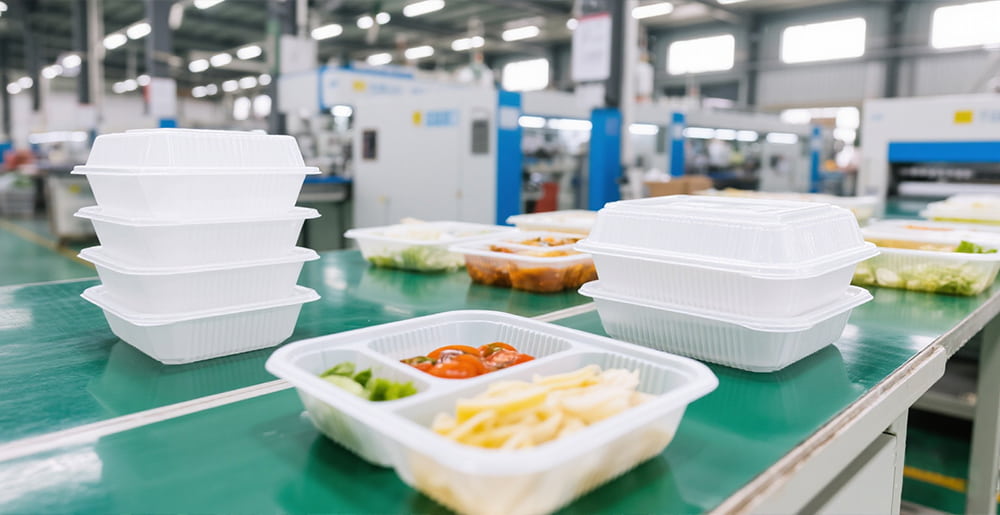
The Early Days of Food Packaging: The Rise of Plastic
1. Traditional Packaging Materials
For much of the 20th century, food packaging relied heavily on glass, metal, and paper. While these materials had certain limitations in terms of durability and flexibility, they were generally considered to be safer for the environment. The breakthrough came in the 1950s when plastic was introduced into the market. Its lightweight, versatile, and cost-effective nature revolutionized food packaging.
2. The Dominance of Plastic in Food Packaging
As plastic packaging became more popular, it was quickly adopted across the food industry for its ability to preserve food, reduce spoilage, and provide convenience for consumers. PET (Polyethylene Terephthalate), PVC (Polyvinyl Chloride), and polystyrene became the go-to materials for packaging everything from beverages to snacks.
However, the environmental impact of plastic was not immediately clear. Over time, the accumulation of single-use plastic in landfills and oceans began to raise alarms. Plastic pollution became a global crisis, with millions of tons of plastic entering the environment each year, harming wildlife and ecosystems.
The Shift Towards Sustainable Food Packaging Materials
1. The Growing Need for Sustainability
As awareness of plastic pollution grew, consumers and businesses began to push for more sustainable food packaging materials. The rise of eco-conscious consumers, especially Millennials and Gen Z, has further fueled this demand. These consumers are increasingly making decisions based on a brand’s sustainability practices, and food packaging is no exception. Brands that embrace sustainable food packaging materials are seeing an increase in consumer loyalty and brand equity.
2. PLA (Polylactic Acid): The Biodegradable Solution
PLA is a biodegradable plastic made from renewable resources such as cornstarch and sugarcane. It offers a viable alternative to traditional plastic packaging, which takes centuries to decompose. One of the biggest advantages of PLA is that it is compostable in industrial composting conditions, providing a way to eliminate packaging waste without harming the environment.
At Dashan Packing, we offer a wide range of PLA food containers, such as our PLA 90-12oz clamshell box and PLA 62-3oz containers. These containers are designed for takeout and deli services, offering a sustainable solution for the foodservice industry. By adopting PLA, businesses can meet consumer demand for eco-friendly food packaging while contributing to the reduction of plastic waste.
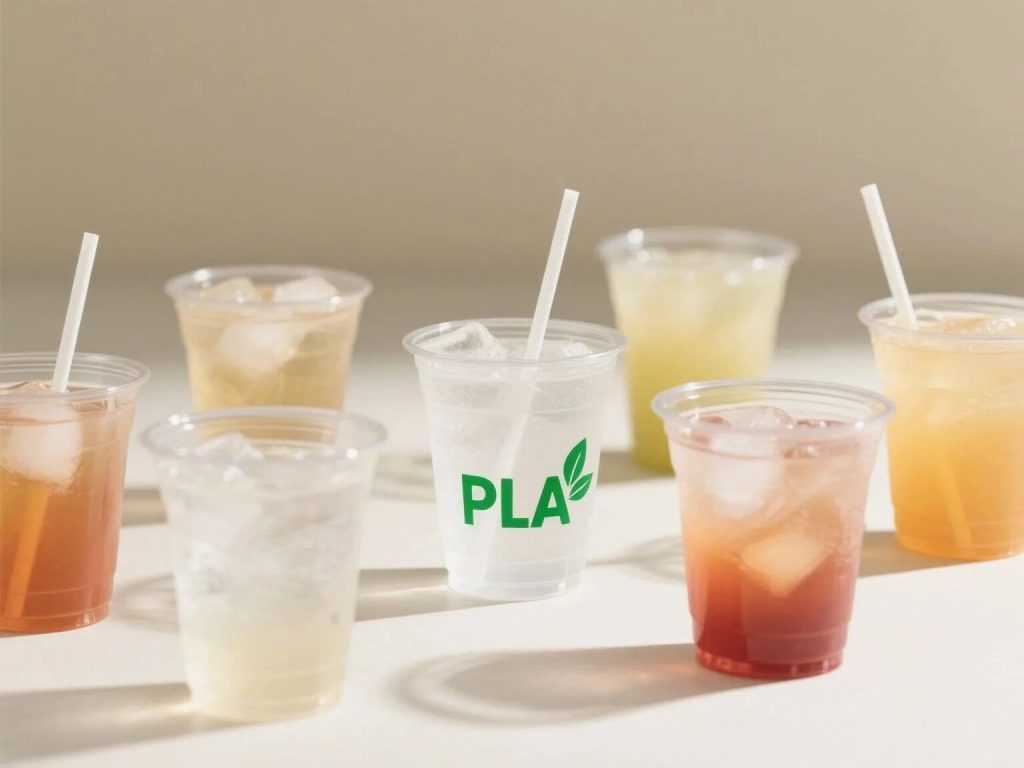
3. rPET (Recycled PET): Giving Plastic a Second Life
Another breakthrough in sustainable food packaging materials is rPET, which is made from recycled PET plastic. By using recycled plastic to create new packaging, rPET helps reduce the need for virgin plastic, significantly lowering the carbon footprint of food packaging. rPET is also fully recyclable, supporting a circular economy where plastic is continuously reused rather than discarded.
Dashan Packing provides rPET food containers like the 90-12oz rPET tray, a perfect example of how recycled PET can be used to create high-quality food packaging that is both durable and environmentally responsible. As part of our commitment to sustainability, we offer these containers to businesses seeking to reduce their environmental impact while maintaining food safety standards.
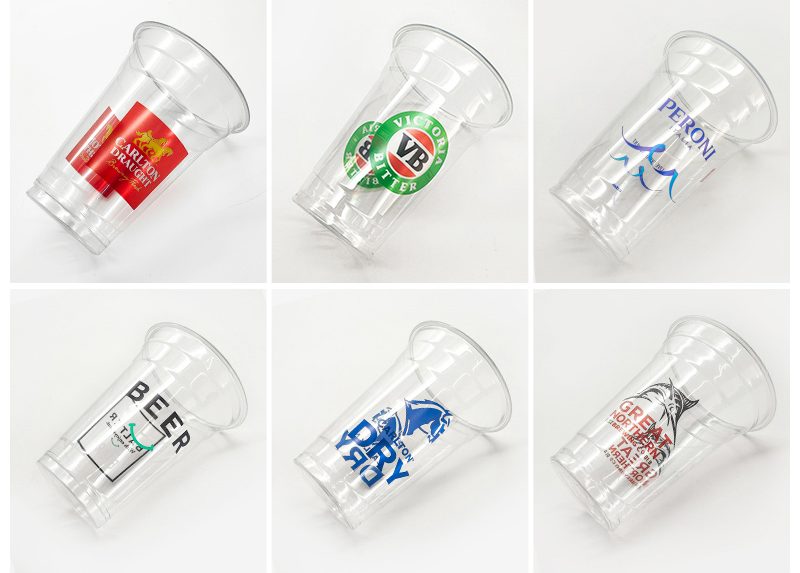
4. CPET (Crystalline PET): Heat-Resistant and Sustainable
CPET is a heat-resistant version of PET, designed specifically for microwaveable and oven-safe food containers. It offers the same durability and clarity as traditional PET but with the added benefit of being able to withstand high temperatures without compromising food safety or integrity. CPET containers are also recyclable, making them a sustainable alternative for businesses that require high-performance food packaging.
At Dashan Packing, our CPET trays like the CT-1610H35-1C tray are ideal for ready-to-eat meals, meal kits, and takeout. These trays are not only practical and durable but also environmentally friendly, supporting the shift towards sustainable food packaging materials in the foodservice industry.
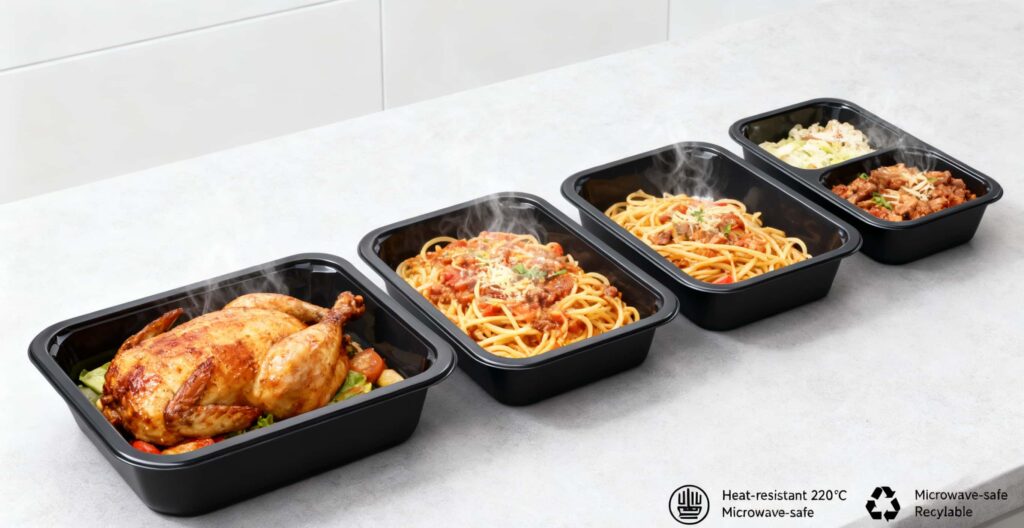
Benefits of Sustainable Food Packaging Materials
1. Environmental Impact Reduction
The most significant benefit of sustainable food packaging materials is their ability to reduce environmental harm. Materials like rPET, PLA, and CPET help lower the carbon footprint of food packaging by reducing plastic waste, conserving resources, and promoting a circular economy. These materials are designed to be either biodegradable, compostable, or recyclable, ensuring that packaging waste is properly managed.
2. Consumer Preference for Eco-Friendly Packaging
Today’s consumers are becoming more conscious of the environmental impact of their purchasing decisions. Studies show that sustainability is a key factor in consumers’ buying decisions, with many willing to pay more for products with eco-friendly packaging. Brands that prioritize sustainable food packaging materials are not only reducing their environmental footprint but also increasing their market appeal.
3. Compliance with Regulations
As governments around the world implement stricter regulations on plastic waste and recycling, businesses that embrace sustainable food packaging materials are better equipped to comply with these new laws. Many regions now require packaging to be recyclable, compostable, or made from recycled materials, and rPET and PLA are leading the way in meeting these standards.
4. Long-Term Cost Savings
While the upfront cost of sustainable packaging can be higher, it can lead to long-term savings. rPET can be recycled multiple times, which reduces the demand for new plastic production. Similarly, PLA and CPET materials are often more efficient in terms of production, helping businesses lower their overall packaging costs in the long run.
The Future of Sustainable Food Packaging Materials
As the demand for sustainability continues to grow, we can expect to see even more innovation in the field of food packaging. Biodegradable plastics, such as PHA (Polyhydroxyalkanoates), are being researched as potential replacements for PLA, and new technologies in plastic recycling will help make packaging more sustainable. Dashan Packing is committed to leading this change, continuously offering innovative sustainable food packaging solutions that meet the evolving needs of the food industry.
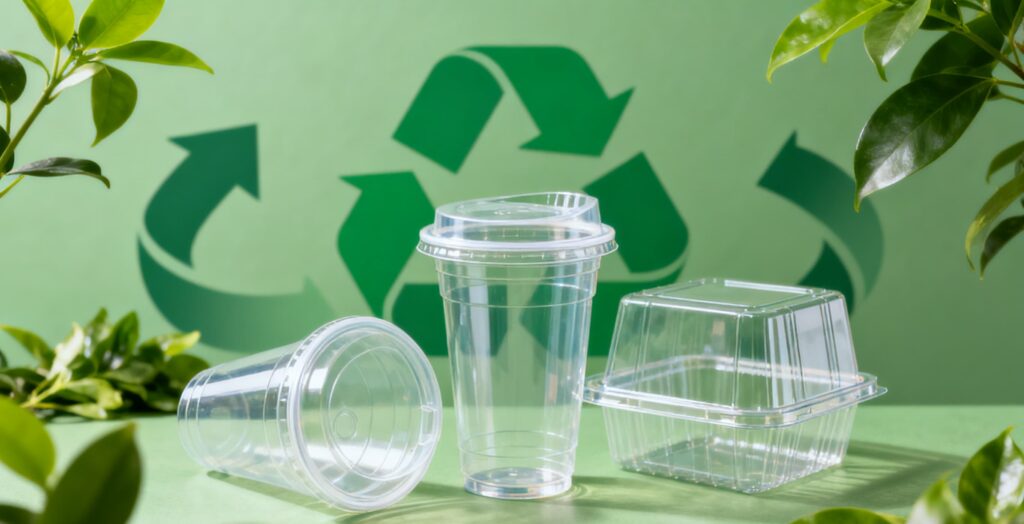
Conclusion: Moving Towards a Greener Future in Food Packaging
The shift from traditional plastic to sustainable food packaging materials is more than just a trend—it’s a necessary step toward reducing plastic pollution and protecting the environment. With materials like rPET, PLA, and CPET, businesses can make significant strides in reducing their carbon footprint while meeting the increasing consumer demand for sustainability.
At Dashan Packing, we are proud to offer a range of eco-friendly food containers that cater to the needs of the modern foodservice industry. As we continue to innovate and adopt sustainable practices, we are helping businesses transition to more sustainable packaging solutions, making the world a better place for future generations.
References
-
European Bioplastics – The Role of rPET in Sustainable Packaging
This article from European Bioplastics highlights the role of rPET in creating sustainable packaging solutions and its impact on reducing plastic waste.
https://www.european-bioplastics.org -
NatureWorks – PLA Packaging Sustainability
NatureWorks provides in-depth insights into PLA production, its biodegradable properties, and the environmental benefits it offers for food packaging.
https://www.natureworksllc.com -
Sustainable Packaging Coalition – Eco-Friendly Packaging Solutions
The Sustainable Packaging Coalition offers information on eco-friendly food packaging solutions and the industry’s efforts to reduce plastic waste.
https://www.sustainablepackaging.org -
BPI – Biodegradable Products Institute
BPI certifies compostable packaging materials like PLA and helps consumers and businesses identify products that are safe for the environment.
https://www.bpiworld.org

